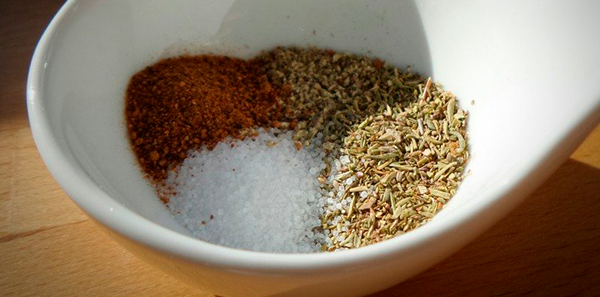
A low-salt or low-sodium diet is used to treat edema (excessive fluid accumulation) and to control hypertension (high blood pressure).
Sodium is an essential mineral for the body and is found in most foods; it is also added to food as a seasoning, preservative and flavor enhancer. The most common form of sodium is table salt, which contains 1,000 milligrams of sodium chloride, while common salt contains 390 milligrams of sodium. A teaspoon of table salt contains 2, 300 ml of sodium. This means that the daily dose of salt varies between 4, 000 and 6,000 milligrams. However, it is not advisable to exceed 3,000 ml of sodium per day. In low-salt diets, 1, 500 to 2,000 ml a day is enough, the equivalent to 5 g of common salt a day. A diet that is too rich in canned food, sausage meta, and ready meals can increase sodium intake up to 10, 000 milligrams a day.
Does salt cause fluid retention?
Fluid retention in the body caused by an excessive salt intake can mean that the heart and kidneys have to work harder and can result in raised blood pressure. Equally, restricting sodium intake can cause effects similar to those produced by diuretics, along with a drop in blood pressure. However, although most people with high blood pressure respond to a low-salt diet, this is not the case with everyone.
Reduce or completely avoid certain foods
In a low-salt diet, you should reduce or completely avoid eating the following foods:
- Fresh or cured sausages, cheese, cured ham, and cooked ham.
- Packet soups, stock cubes and packet purées.
- Slaty snacks, salted popcorn, salted nuts, olives, potato crisp…
- Canned food, ready meals, sauces an smoked fish.
- Some sweet foods can also contain a lot of salt, such as mass-produced cakes and pastries, buns, biscuits, cereals, etc.
- Tinned fruit in syrup, sparkling water and fizzy soft drinks.
Tips:
- Avoid adding extra salt when cooking.
- Enjoy the natural flavours of food by steaming it cor cooking it wrapped in kitchen foil.
- Use flavour-packed olive oils. Garlic and onion are also Good for bringing out the natural flavors of food.
The information published in this media neither substitutes nor complements in any way the direct supervision of a doctor, his diagnosis or the treatment that he may prescribe. It should also not be used for self-diagnosis.
The exclusive responsibility for the use of this service lies with the reader.
ASSSA advises you to always consult your doctor about any issue concerning your health












